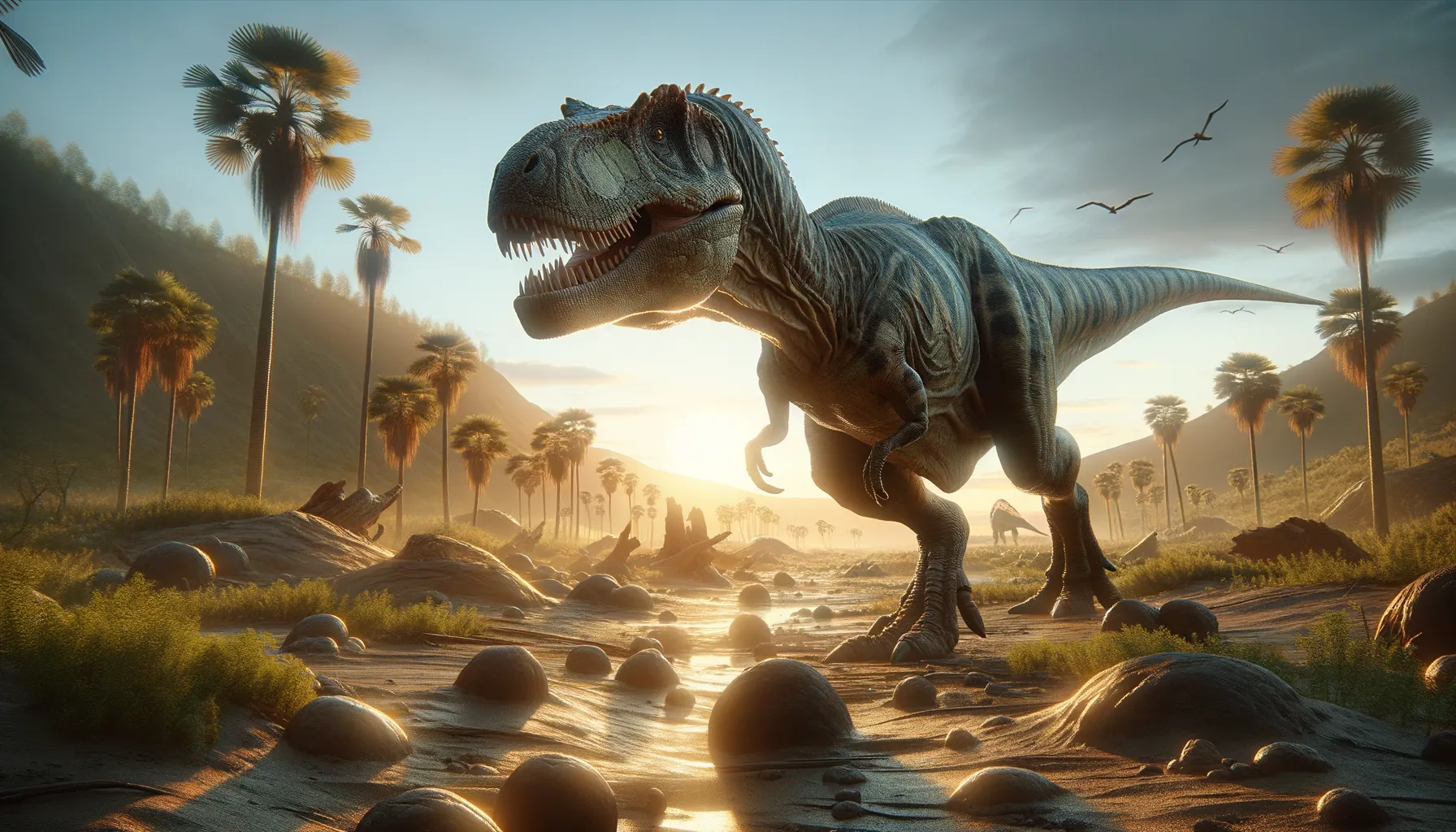
Veterupristisaurus
A Jurassic giant in a prehistoric world.
Period
Jurassic
Length
Roughly 8 meters long.
Height
About 2 meters at the hip.
Weight
Approximately 1.5 tons.
Veterupristisaurus was an impressive theropod dinosaur that roamed the lands during the Late Jurassic period. Known for its robust build and sharp teeth, it was likely a fierce predator. Its fossils, found in the Tendre Yeo Beds of Tanzania, have provided valuable insights into theropod evolution and ecology. Despite limited fossil finds, its role as a large predator in its ecosystem is acknowledged by paleontologists.
Diet
Veterupristisaurus was carnivorous, feeding on other dinosaurs and smaller animals. Its diet likely included a variety of prey, making it a key predator in its ecosystem.
Hunting
This dinosaur probably relied on ambush tactics to catch its prey, using its powerful legs for short bursts of speed. Its sharp teeth played a crucial role in subduing and consuming its catch.
Environmental challenges
Living in the Late Jurassic, Veterupristisaurus faced challenges such as changing climates and competition for food. Shifts in vegetation and prey availability may have influenced its survival strategies. Adaptations to these challenges were essential for its persistence in a dynamic ecosystem.
Speed
Moderate, likely slower due to its large size.
Lifespan
Estimated around 25-30 years.
First discovery
Discovered in 2000 in Tanzania.
Fun Facts
- Veterupristisaurus lived during the Late Jurassic period, about 150 million years ago.
- The name Veterupristisaurus means 'old shark lizard', highlighting its fierce reputation.
- It was a theropod dinosaur, which means it walked on two legs and was likely a carnivore.
- Veterupristisaurus was discovered in what is now Tanzania, Africa.
- Its fossils were first described in 2011, making it a relatively recent discovery in paleontology.
- This dinosaur was part of the same group of theropods that includes famous dinosaurs like Allosaurus.
- Veterupristisaurus may have been a top predator in its environment, hunting other large dinosaurs.
Growth and Development
Veterupristisaurus likely experienced rapid growth during its juvenile years, similar to other theropods. This fast growth rate helped it quickly reach a size where it was less vulnerable to predation. Bone analysis suggests periods of slower growth during maturity, typical of large theropods.
Habitat
It inhabited regions with varied landscapes, including floodplains and river valleys. These environments offered abundant prey and diverse ecological niches. As a top predator, it played a significant role in maintaining the balance of its habitat's ecosystem.
Interaction with other species
Veterupristisaurus likely interacted with both prey and predator species within its ecosystem. Its presence influenced the behavior and distribution of other animals. Interactions with other theropods possibly included competition for territory and resources.
Natural lifespan
Veterupristisaurus lived naturally for up to 25-30 years.
Reproduction
Reproduction involved laying eggs, possibly in nests similar to those of modern birds and reptiles. Parental care is not well-documented, but it's assumed newborns were vulnerable and needed protection. Communal nesting sites might have been used to increase survival rates.
Social behaviour
Veterupristisaurus might have been solitary or operated in small groups for hunting. Social behavior in such theropods is often inferred from fossil evidence of trackways and nesting sites. Cooperation, if any, was likely limited to specific situations like hunting or breeding.
Fossil locations
Fossils have been found mainly in the Tendaguru Formation in Tanzania. This region is known for its rich deposits from various Jurassic species, offering insights into the animals' shared environmental conditions. Efforts continue to unearth more specimens to better understand its distribution and lifestyle.
